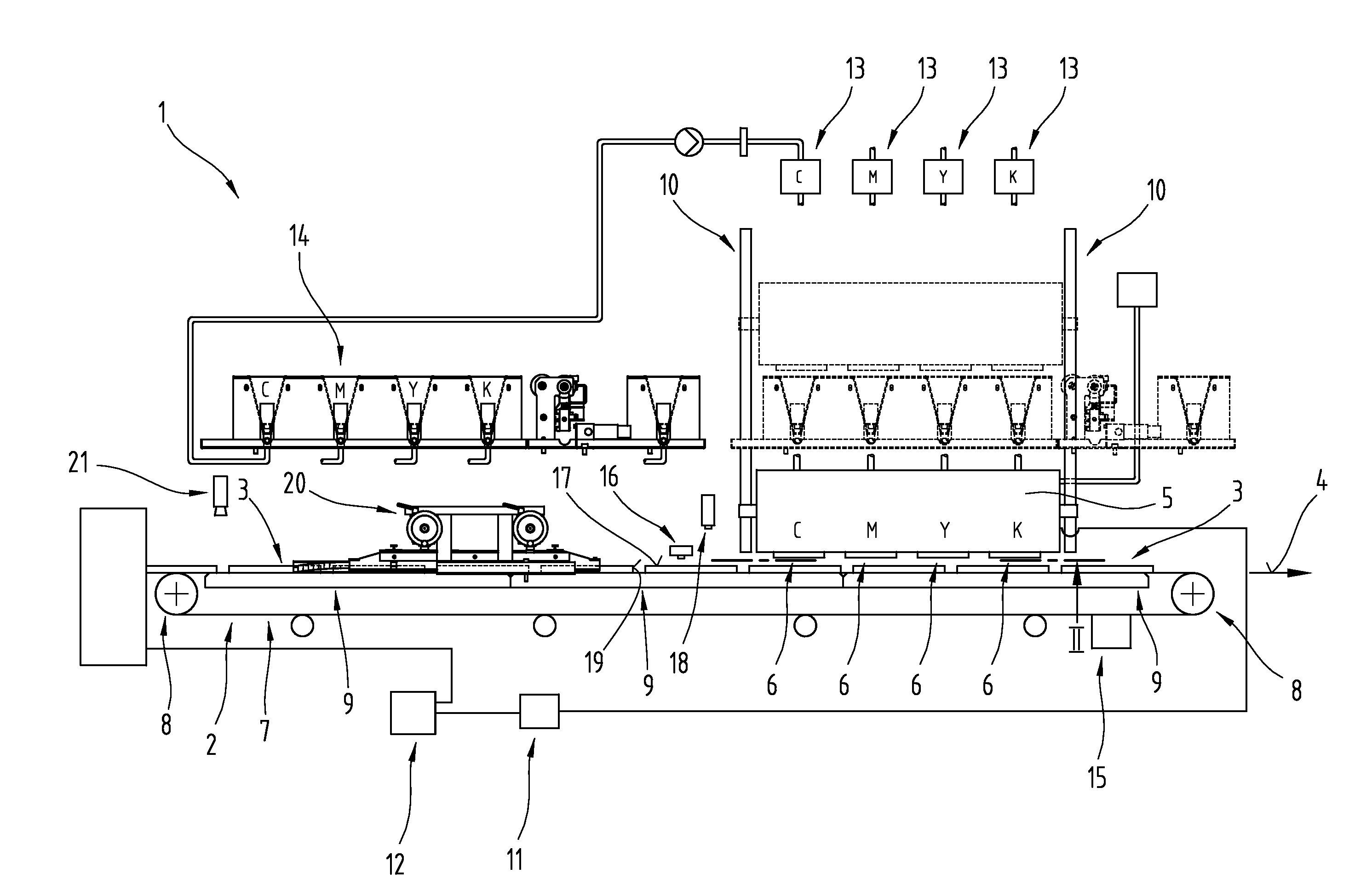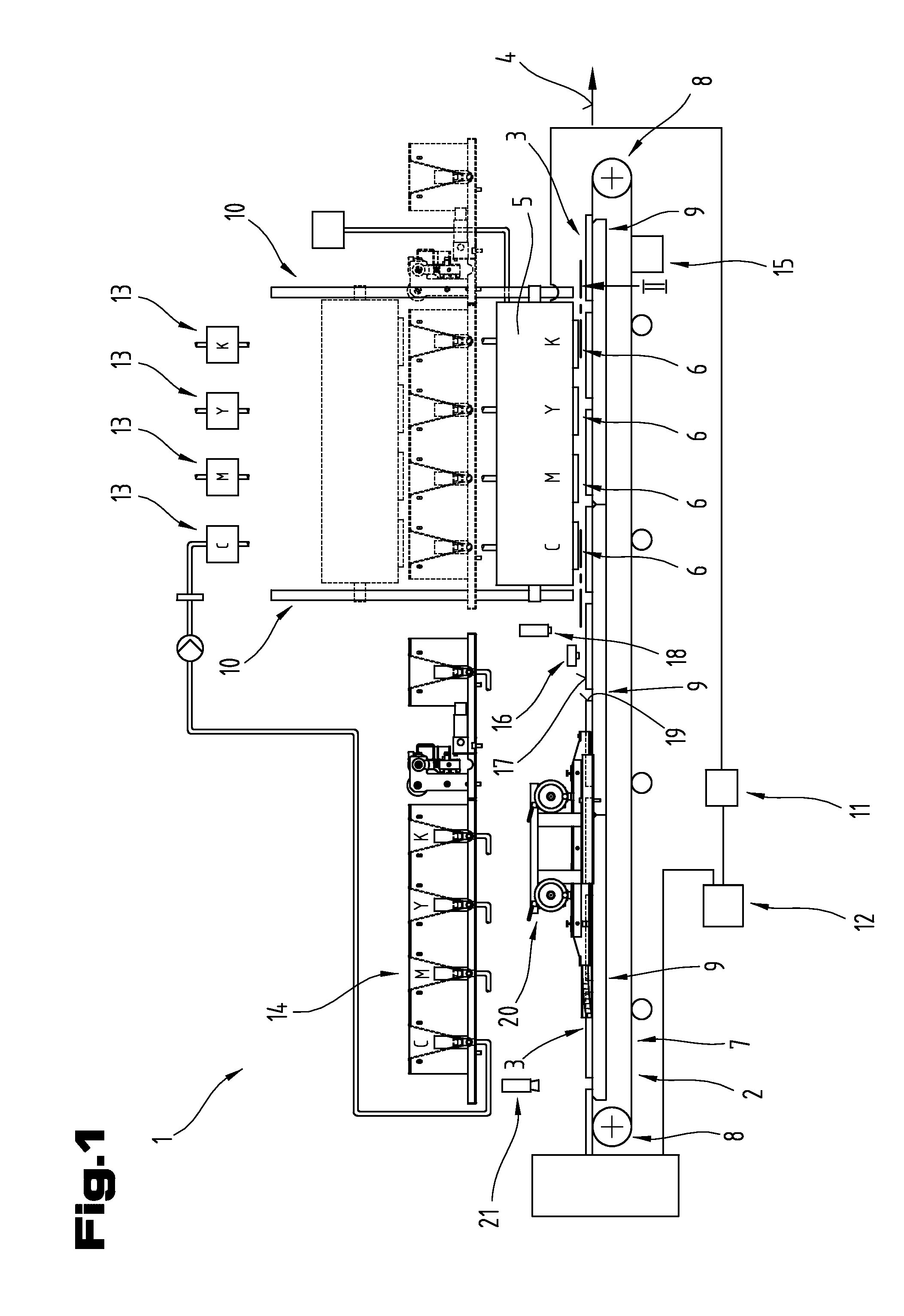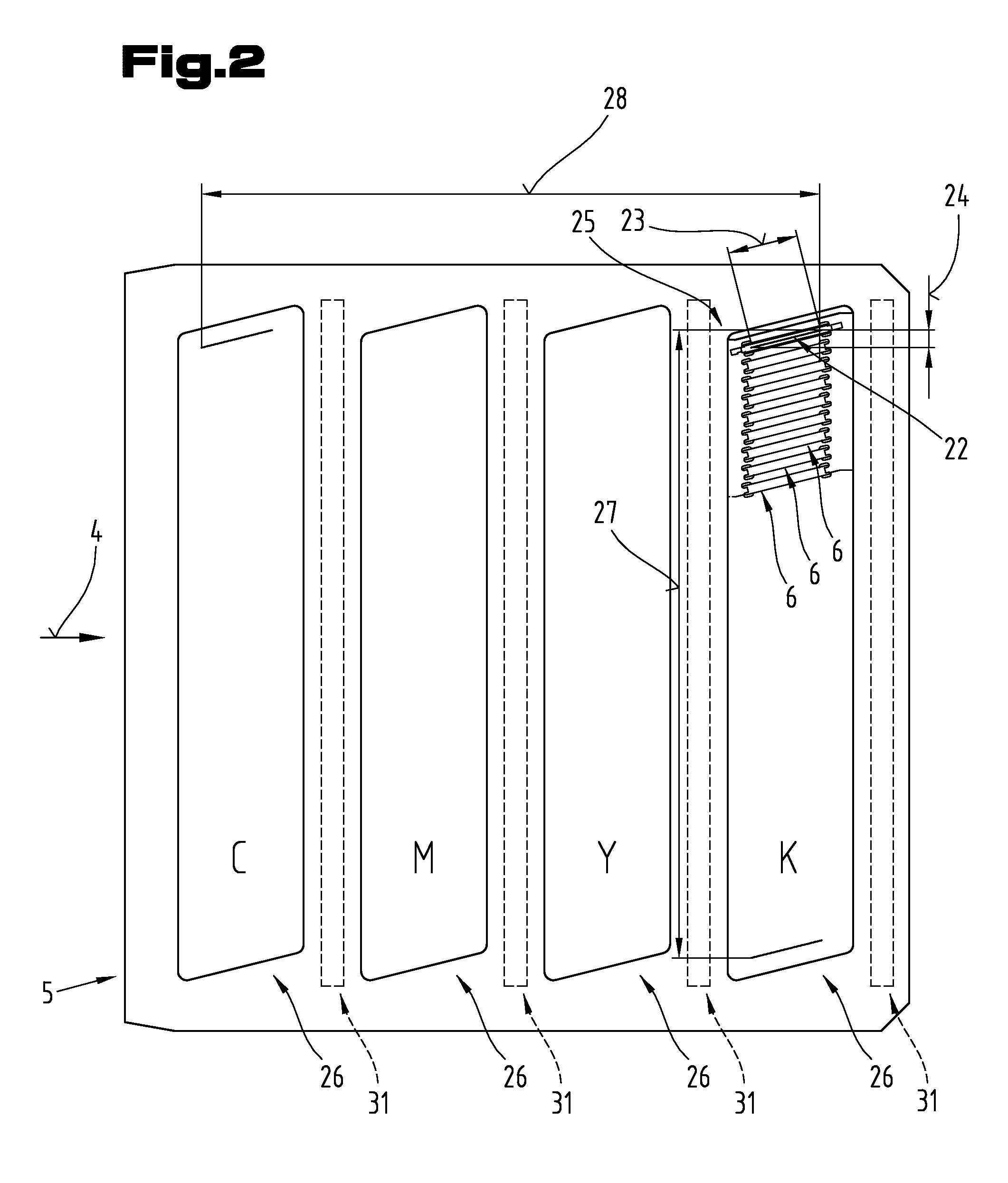Method for producing a multicolored surface on glass
a multi-colored surface and glass technology, applied in the field of multi-colored surface production, can solve the problems of screen printing, separate screen setup, and screen printing inks that are completely opaque and not transparen
- Summary
- Abstract
- Description
- Claims
- Application Information
AI Technical Summary
Benefits of technology
Problems solved by technology
Method used
Image
Examples
example 1
[0083]A black firable process color ink consisting of the carrier fluids polypropylene glycol diacrylate, high molecular polyethylene glycol and 1,2-propane diol, the pigments CoCr2O4, CuCr2O4 and CO3O4, the frit material Bi2O3, viscosity regulators and the photoinitiator Irgacure 819® was printed by the described method onto glass and fixed by UV-light. The applied and prefixed process color ink was fired at a temperature of 700° C.
example 2
[0084]A black firable process color ink consisting of the carrier fluids polypropylene glycol diacrylate, high-molecular polyethylene glycol and 1,2-propane diol, the pigments CoCr2O4, CuCr2O4 and CO3O4, the frit material Bi2O3, viscosity regulators and the thermal initiator 1,1′-azobis(cyclohexanecarbonitrile) was printed by the described method on glass and fixed by means of an IR element. The applied and prefixed process color ink was fired at a temperature of 650° C. to 700° C.
example 3
[0085]A blue firable process color ink consisting of the carrier fluids polypropylene glycol diacrylate, epoxy-functionalized polyethylene glycol and hexane diol, the pigment CoAl2O4, a frit material with acrylate-functionalities (obtained by a silanization reaction of the frit material), viscosity regulators and the UV initiator 2-hydroxy-2-methyl propiophenone was printed by the described method onto glass and onto ceramic elements and fixed by means of UV emitters. The applied and prefixed process color ink was fired at a temperature of 650° C. to 700° C.
PUM
| Property | Measurement | Unit |
|---|---|---|
| particle diameter | aaaaa | aaaaa |
| particle diameter | aaaaa | aaaaa |
| particle diameters | aaaaa | aaaaa |
Abstract
Description
Claims
Application Information
 Login to View More
Login to View More - R&D
- Intellectual Property
- Life Sciences
- Materials
- Tech Scout
- Unparalleled Data Quality
- Higher Quality Content
- 60% Fewer Hallucinations
Browse by: Latest US Patents, China's latest patents, Technical Efficacy Thesaurus, Application Domain, Technology Topic, Popular Technical Reports.
© 2025 PatSnap. All rights reserved.Legal|Privacy policy|Modern Slavery Act Transparency Statement|Sitemap|About US| Contact US: help@patsnap.com



